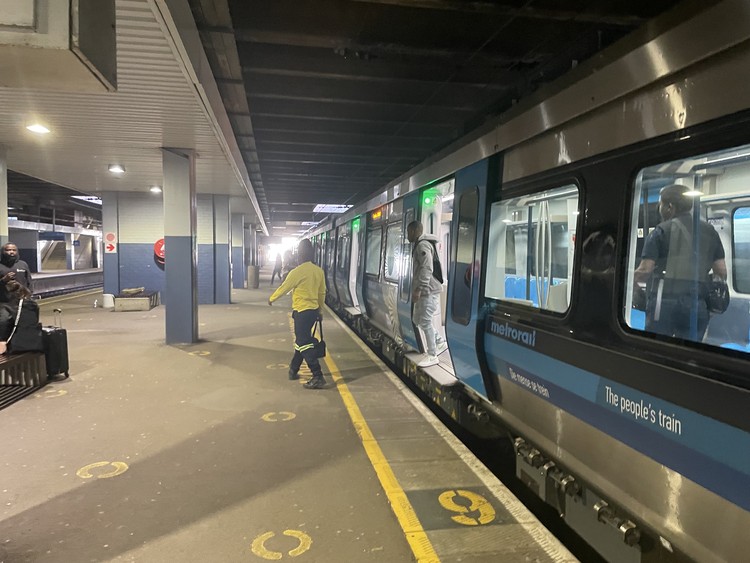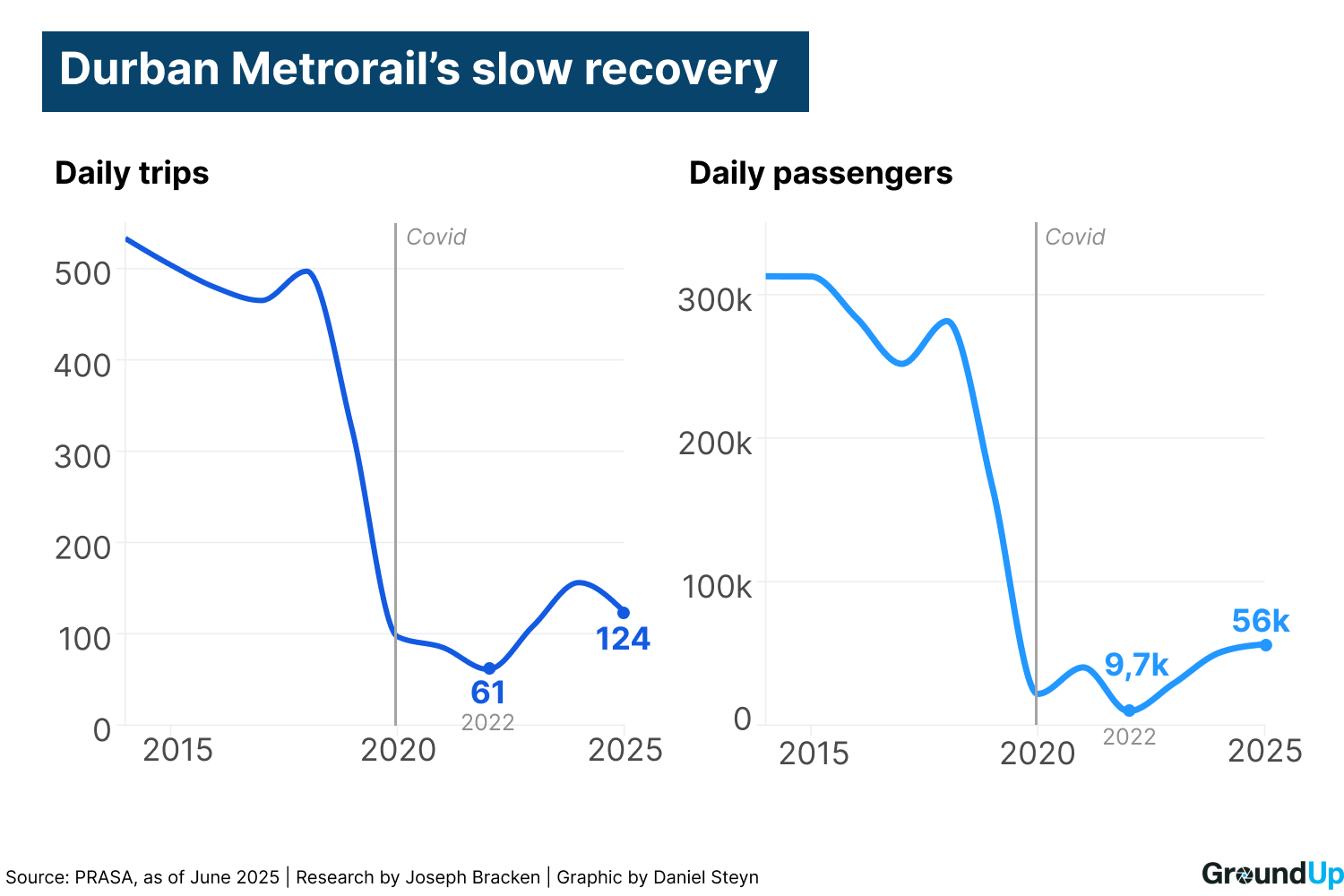
2 July 2025
Passengers exit the train after a journey on the Southern Line. Photos: Joseph Bracken.
Since the collapse of the Durban Metrorail between 2019 and 2023, the Passenger Rail Agency of South Africa (PRASA) has spent almost R622-million on infrastructure upgrades, bringing most routes in the city back online.
This has resulted in a slow increase in passenger train trips over the past three years.
But there is much work yet to be done. The Bluff Line is not operational and only parts of the Northern Coast and Southern Coast Lines are operating.
Due to the bad condition of tracks and signalling equipment, the trains run slowly, meaning that trips take up to four times longer than they would by car or taxi. And some equipment at stations, including digital display boards and automatic access gates, is broken.

There has been an uptick in performance on the Durban Metrorail since 2022, but numbers are still far below what they were before Covid.
Between 2014 and 2018, the Durban Metrorail operated 467 trips a day and was used by an average of about 288,500 passengers a day.
PRASA’s infrastructure was already ailing when the Covid pandemic hit, which severely affected the rail service. Remaining infrastructure was left to be vandalised.
By 2022, performance had dropped to 61 trips and 9,700 passengers a day on average. Since 2023, though, there has been a slow and steady increase. This year, there have been an average of 124 trips and 56,000 passengers a day.
PRASA spokesperson Andiswa Makanda says that work in recent years has mainly been on overhead track equipment, signalling equipment and substations.

Durban’s Bluff Line is still closed and the Southern Coast and Northern Coast lines run only partial services. Graphic by PRASA, dotted line indicating closed sections added by GroundUp.
In June, GroundUp rode the eThekwini Metrorail on two lines. Stations and trains were clean and safe and officials checked passengers’ tickets on the trains.
The Old Main Line runs six return trips a day from Durban to Pinetown and back. We took the third train of the day on a Thursday afternoon. A return ticket cost R17. The train was empty – there were a maximum of seven passengers on board for the whole journey.
The train was extremely slow. The journey to Pinetown, which would have taken 25 minutes by car or taxi without traffic, took 75 minutes.
Makanda explained that the trains need to run slowly because of the condition of the tracks and signalling system. “Work is currently underway” to improve this, she said.
Along the way, we saw security guards on the platforms at stations and cleaners sweeping the pavements. We also saw PRASA employees clearing the foliage on the railway lines.
Fences outside some of the stations were broken, leaving gaps large enough for people to fit through.
The next day, we took the Southern Line from Durban at peak hour. This line runs down the south coast of Durban. Currently, the line terminates at Isipingo, leaving ten stations along the line without service. This line operates 12 return trips a day.
Our trip cost R14 for a return ticket. The train was supposed to leave Durban station at 5.38am, but it only left at 5.59am. It was fuller than the Old Main Line trip, with all seats taken, but no passengers standing.
The train ran slowly and stopped frequently before reaching some stations. One of these stops lasted more than ten minutes. A security guard on the train said there were “system issues”.
By the time the train got to Merebank, the seventh station on the journey, the commute had taken 45 minutes. The same journey by car or taxi would have taken between 15 and 25 minutes.
The train back from Merebank was 30 minutes late.
At Durban Station, two large digital display boards looked brand new, but neither of them were working. Automated access gates, meant to open when a ticket is scanned, were broken.
Makanda said the ticket doors and digital boards projects were halted because a contract for repairs was terminated.
Tickets can only be bought with cash. A poster outside the ticket offices promises a card machine. But, Makanda says, this has not yet been installed.
The escalators inside the station do not work, and some of the older commuters struggled to get up the stairs.
Makanda said the escalators will need to be completely replaced, which will form part of the “station modernisation” programme. But she provided no timeline for when this would be completed.
Digital displays supposed to show the train timetable are out of order at Durban Station.